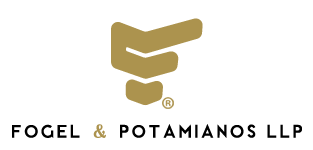Last post, we looked at an earn-out example from Sotheby’s in which the entire earn-out will be paid. Here we will look at another example, this time from Disney’s acquisition of Maker Studios in 2014, where key executives stayed on with Disney.
Here we look to Disney’s 10K from 2015.
On May 7, 2014, the Company acquired Maker Studios, Inc. (Maker), a leading network of online video content, for approximately $500 million of cash consideration. Maker shareholders may also receive up to $450 million of additional cash upon final determination of Maker’s achievement of certain performance targets for calendar years 2014 and 2015. The Company recognized a $198 million liability for the fair value of the contingent consideration (determined by a probability weighting of potential payouts), of which approximately $100 million was paid in fiscal 2015 for calendar year 2014. Subsequent changes in the estimated fair value, if any, will be recognized in earnings. The majority of the purchase price has been allocated to goodwill, which is not deductible for tax purposes. Goodwill reflects the synergies expected from enhancing the presence of Disney’s franchises and brands through the use of Maker’s distribution platform, advanced technology and business intelligence capability.
There are several things to note from this scenario:
First, the purchase was for $500 million in cash with $450 million in potential earn-outs based on 2014 and 2015 (47.37% of value of sale in potential earn-outs over 2 year term). The buyer (Disney) here estimated that $198 million of the $450 million was the fair value of this liability based on the probability of payout. As of that 10K filing, approximately $100 million was paid and there was one year remaining on the term.
Second, there are important tax considerations for the buyer that go beyond this post, but suffice it to say that generally goodwill has a longer tax burden, so often a purchase will be structured for the buyer to reduce to the amount of the price allocated towards goodwill.
Third, a seller will take a balloon payment in the value of the company when there is typically more control over operations. In this case, the sellers key executives stayed on with Disney.
Now we look to Disney’s 10-K from 2016
In fiscal 2015 and fiscal 2016, the Company paid $105 million and $70 million, respectively, for the contingent consideration.
Here, we learn that $105 million was paid in 2015 and that $70 million was paid in 2016. Cumulatively, this means that $500 million was paid in cash and $175 million was paid in earn-outs. The sellers received 71.05% of the total potential sale of $950 million with the earn-outs. The seller achieved 38.89% of the $450 million in potential earn-outs.
When the earn-out period concluded, some executives from Maker Studios left Disney. Part of M&A is making bets on companies, and not all of them integrate exactly as planned. That is part of the risk involved, which companies do their best to reduce.
Fogel & Potamianos LLP‘s General Counsel Group serves as outsourced general counsel to small and middle market companies, as well as high net worth individuals. Our Corporate Practice Group provides expertise in M&A dealmaking.
Disclaimer
This blog is provided for general informational purposes only and no attorney-client relationship with Fogel & Potamianos LLP is created. By using the blog, you agree that the information on this blog does not constitute legal or other professional advice. The blog is not a substitute for obtaining legal advice regarding a potential matter from a qualified attorney licensed in your state. Last post, we looked at an earn-out example from Sotheby’s in which the entire earn-out will be paid. Here we will look at another example, this time from Disney’s acquisition of Maker Studios in 2014, where key executives stayed on with Disney. Here we look to Disney’s 10K from 2015. On May 7, 2014, the Company acquired Maker Studios, Inc. (Maker), a leading network of online video content, for approximately $500 million of cash consideration. Maker shareholders may also receive up to $450 million of additional cash upon final determination of Maker’s achievement of certain performance targets for calendar years 2014 and 2015. The Company recognized a $198 million liability for the fair value of the contingent consideration (determined by a probability weighting of potential payouts), of which approximately $100 million was paid in fiscal 2015 for calendar year 2014. Subsequent changes in the estimated fair value, if any, will be recognized in earnings. The majority of the purchase price has been allocated to goodwill, which is not deductible for tax purposes. Goodwill reflects the synergies expected from enhancing the presence of Disney’s franchises and brands through the use of Maker’s distribution platform, advanced technology and business intelligence capability. There are several things to note from this scenario: First, the purchase was for $500 million in cash with $450 million in potential earn-outs based on 2014 and 2015 (47.37% of value of sale in potential earn-outs over 2 year term). The buyer (Disney) here estimated that $198 million of the $450 million was the fair value of this liability based on the probability of payout. As of that 10K filing, approximately $100 million was paid and there was one year remaining on the term. Second, there are important tax considerations for the buyer that go beyond this post, but suffice it to say that generally goodwill has a longer tax burden, so often a purchase will be structured for the buyer to reduce to the amount of the price allocated towards goodwill. Third, a seller will take a balloon payment in the value of the company when there is typically more control over operations. In this case, the sellers key executives stayed on with Disney. Now we look to Disney’s 10-K from 2016

